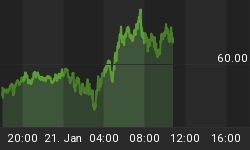Market Summary
All three major U.S. stock indexes ended at record highs on Thursday for the first time since 1999, extending a recent rally that has increased investor concern about pricey valuations. The major equity indexes basically finished the week flat with the S&P 500 Index finishing up a modest 0.1% and the Blue Chip-heavy Dow Jones Industrial Average rose 0.2%. The Nasdaq increased .2% while the small cap Russell 2000 finished up 0.1%.

Put/Call Ratio is the ratio of trading volume of put options to call options. The Put/Call Ratio has long been viewed as an indicator of investor sentiment in the markets. Times where the number of traded call options outpaces the number of traded put options would signal a bullish sentiment, and vice versa. Changes or swings in the ratio are seen as instances of great importance as this is commonly viewed as a change in the tide of overall market sentiment. The current ratio confirms investors are extremely bullish as they focus on call contracts to bet on higher stock prices.

The CBOE Volatility Index (VIX) is known as the market's "fear gauge" because it tracks the expected volatility priced into short-term S&P 500 Index options. When stocks stumble, the uptick in volatility and the demand for index put options tends to drive up the price of options premiums and sends the VIX higher. As we have been saying recently "...Option volatility remains at extremely low levels as the major indexes hit all-time highs. With earnings season winding down and in the middle of slow summer months, the Volatility Index will probably remain suppressed for the near-term..."

The American Association of Individual Investors (AAII) Sentiment Survey measures the percentage of individual investors who are bullish, bearish, and neutral on the stock market for the next six months; individuals are polled from the ranks of the AAII membership on a weekly basis. The current survey result is for the week ending 08/10/2016. Optimism among individual investors about the short-term direction of stock prices rebounded back above 30% in the latest AAII Sentiment Survey. Neutral sentiment pulled back modestly, while pessimism was unchanged. Bullish sentiment, expectations that stock prices will rise over the next six months, rose 1.5 percentage points to 31.3%. The rise reversed last week's decline. This is the 40th consecutive week and the 73rd out of the past 75 weeks with a bullish sentiment reading below its historical average of 38.5%. Neutral sentiment, expectations that stock prices will stay essentially unchanged over the next six months, declined 1.5 percentage points to 42.0%. This is the 28th consecutive week with a neutral sentiment reading above its historical average of 31.0%. Bearish sentiment, expectations that stock prices will fall over the next six months, is unchanged at 26.8%. Pessimism is below its historical average of 30.5% for the sixth consecutive week. Bullish sentiment is above 30% for the fifth time in six weeks. This fact shows just how low optimism has been. Over the span of the past 12 months, bullish sentiment was at or above 30% during 14 out of 16 weeks between August 12 and November 25, 2015, and during six out of seven weeks between February 24 and April 6, 2016. The remainder of the time, optimism has mostly stayed below 30%. So, while still low, optimism has improved recently overall on a comparative basis.

The National Association of Active Investment Managers (NAAIM) Exposure Index represents the average exposure to US Equity markets reported by NAAIM members. The blue bars depict a two-week moving average of the NAAIM managers' responses. As the name indicates, the NAAIM Exposure Index provides insight into the actual adjustments active risk managers have made to client accounts over the past two weeks. The current survey result is for the week ending 08/10/2016. Second-quarter NAAIM exposure index averaged 60.52%. Last week the NAAIM exposure index was 93.50%, and the current week's exposure is 92.86%. As we said last week "...Many investors view equities as the only game in town...the market may be starting another bullish leg higher; therefore it is reasonable to the equity exposure index to remain elevated..."

Trading Strategy
You can see in the graph below how technology shares remain the best bet in town. The major concern is that the market advance is not broad-based. Tech shares leading the market higher are not dragging along the other S&P sectors. The smart move is hedge long-term positions to protect gains in the event of a market pullback.

Feel free to contact me with questions,
















